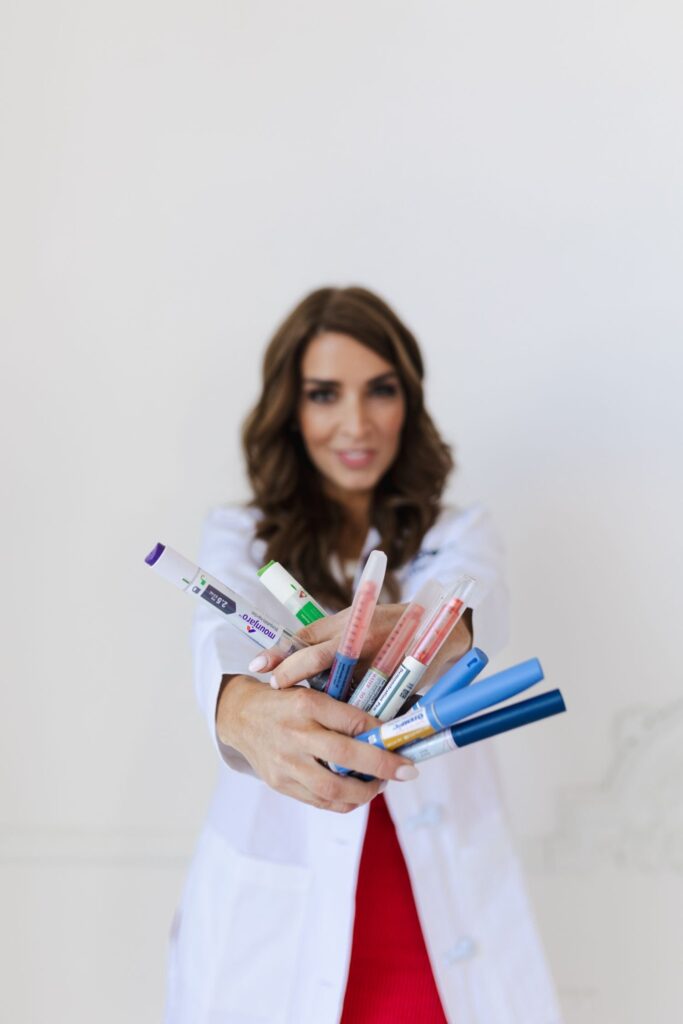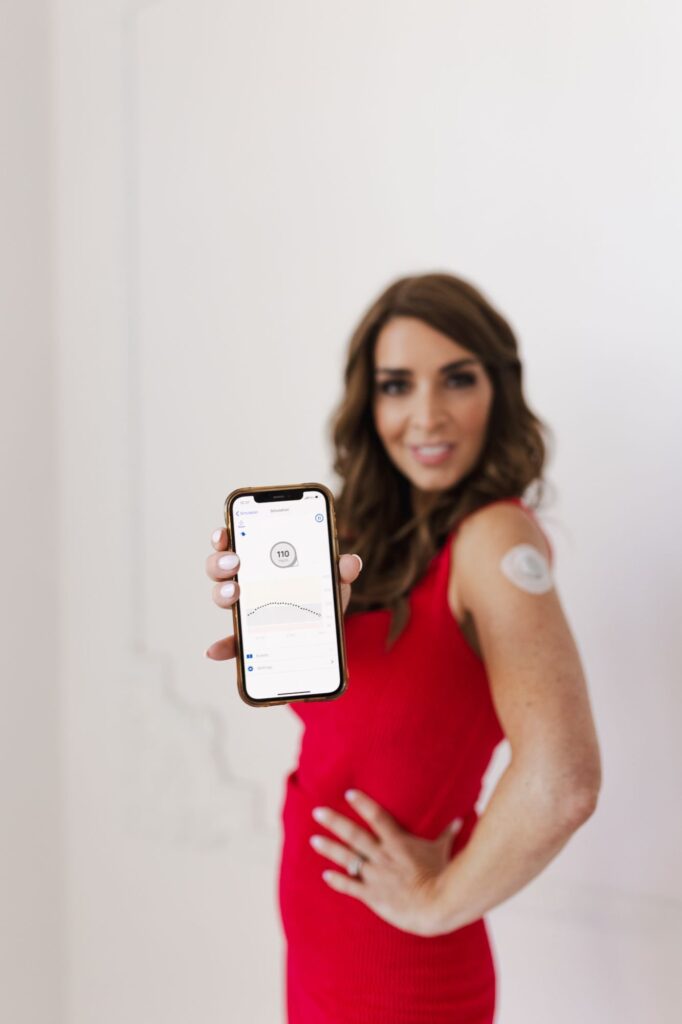In this episode of the T1 Dialogues, host Pete Lomas spoke with Rachel Sood, founder of the Diabetes Collective in New Orleans, about one of the most challenging aspects of diabetes management: behavior change. Their conversation revealed how technology—particularly Continuous Glucose Monitors (CGMs)—is transforming diabetes care by providing the visibility patients need to make sustainable changes.
The Behavior Change Challenge
Pete Lomas frames the central challenge of diabetes management as the countless daily decisions that ultimately affect outcomes like HbA1c and time in range. For healthcare providers like Rachel Sood, supporting patients through these decisions requires a delicate balance of guidance and autonomy.
“My dad always told me you cannot change anyone without changing yourself first… You cannot change people. They have to see things and you have to lead through example. And it’s really important to serve others.”
This philosophy forms the foundation of Rachel’s approach to facilitating behavior change. Rather than imposing changes on patients, she emphasizes listening and understanding, creating an environment where patients can come to their own conclusions about what changes they need to make.
Understanding the Cyclical Nature of Diabetes Management
Diabetes management isn’t a linear journey but fluctuates with life’s changing circumstances. Rachel recognizes that patients move through different phases of readiness for change, much like other aspects of life.
“I do realize that this is a cyclical thing with diabetes where you’re going to have different times in life where you’re going to have different stressors and different life changes. And sometimes you’re ready and sometimes you’re not. It’s like falling in and out of love, right? Things happen, things don’t.”
This perspective allows her to meet patients where they are, understanding that readiness for change varies over time. By bringing information to people without judgment and seeing what they need, she creates space for patients to take the lead in their own care journey.
Relationships Before Treatment Plans

Before diving into clinical details, Rachel prioritizes understanding the whole person. This approach builds the foundation for self-accountability, which she believes is more effective than accountability to a healthcare provider.
“I don’t just jump into any visit and just start talking about this amount of insulin and you should prick your finger and you need to bolus insulin more before your meal… I want to know like, how’s your job going? How’s your relationship? What’s going on with work? What’s going on with kids?”
By focusing first on life circumstances and personal goals, Rachel helps patients recognize their own needs and motivations for change. This self-driven accountability creates a stronger foundation for lasting behavior change than external pressure from healthcare providers.
CGMs: Turning on the Headlights
When asked what finally helps people break through barriers to better diabetes management, Rachel immediately points to Continuous Glucose Monitors as game-changers. Her analogy vividly illustrates the transformative impact of real-time glucose data:
“You’re not going to drive down an interstate going 90 miles an hour without the headlights on. You can, but why would you?”
CGMs provide immediate feedback that helps patients understand how their actions affect their glucose levels, making abstract concepts concrete and visible. This visibility creates opportunities for behavior change that might otherwise be impossible, allowing patients to make informed decisions based on real-time data rather than guesswork.
Rachael shared the story of one of her patients who had lived with type 1 diabetes for 20 years but had never been prescribed a CGM. “Here in the United States, in South Louisiana, in the year 2025, I am the first person that prescribed her a continuous glucose monitor.”
For two decades, this patient had been dosing insulin and making decisions without the benefit of knowing where her blood sugar actually was in real time. Understandably, she had developed habits meant to protect herself from dangerous lows—like drinking juice throughout the day without giving insulin for it.
“She’s scared of going low,” Rachael explained. “But she just drinks juice all day.”
That behavior is not unusual. For people with type 1 diabetes, the fear of hypoglycemia can lead to patterns that prioritize staying high over risking a dangerous low. Over time, these patterns become ingrained.But the introduction of the CGM changed everything. Now, her patient could see her blood sugar levels throughout the day, providing reassurance and reducing the fear-driven behaviors that had defined her diabetes management.
“For most people that I give continuous glucose monitors to, they are much more able to care for themselves and make decisions independently and be more proactive…Which is what I want. I want them to be more independent.”
Fear and Trust: The Psychological Battle
The fear of hypoglycemia is a powerful driver of behavior in diabetes. For many, it’s safer (psychologically) to run high than risk going low. But that choice has long-term consequences.
“You almost have to make a choice,” Pete noted. “There’s no real perfection. We never just sit on a straight line. We’re either going up or down. It just depends on how fast.”
Helping patients work through that mental block is one of the biggest challenges in diabetes care. You still have some patients that are struggling, and it’s not because they’re bad people or their bad habits., they’ve been hurt and they’ve been through a lot. Rachael emphizes in the podcast.
CGMs can help bridge that gap by providing reassurance. Seeing a stable blood sugar on the screen can build confidence over time. But it also requires patience and empathy from healthcare providers.
The comfortable environment Rachel has created builds the trust necessary for patients to engage with the data provided by CGMs and make meaningful changes. This trust is fundamental to the success of any technology or intervention.
“The humaneness is definitely lacking in a lot of areas, but that’s part of, I think, any business or any brand. It’s about relationships and it’s about developing those relationships… you’ve got to be able to have people that relate to you and trust you or you will not be successful. You cannot help people without that.”
Without this foundation of trust and human connection, even the most advanced technology will fail to facilitate meaningful behavior change. Rachel’s success with CGMs is as much about her approach to the patient relationship as it is about the technology itself.
A New Approach to Diabetes Care

At her clinic, the Diabetes Collective, Rachael is trying to do things differently. Inspired by her background in theater and her love of creativity, she designed the space to feel less like a sterile clinic and more like a cozy, welcoming salon.
“I actually modeled it off of a hair salon,” she laughed. “When you walk in, it smells good. There’s zebra print, cool music, and a nice couch. You feel happy when you walk in. And I’m like, why can’t I make diabetes like this? And then I’m like, I can.”
This approach extends to how she interacts with patients. “It’s more casual,” she said. “Like hanging out with someone at a coffee shop.”
That casual, relationship-first approach builds the trust needed for real behavior change. It makes difficult conversations about dosing and lifestyle easier because they’re built on a foundation of mutual respect.
Visibility, Trust, and Patience
Rachel Sood’s insights reveal that effective behavior change in diabetes management requires three key elements:
- Visibility: CGMs provide the real-time data patients need to understand how their actions affect their glucose levels, making abstract concepts concrete and actionable.
- Trust: A comfortable, non-judgmental environment creates the foundation for patients to engage with their data and consider changes.
- Patience: Recognizing that behavior change happens at different rates for different people, and that past experiences shape current behaviors, allows healthcare providers to support patients through their individual journeys.
As technology continues to evolve, the human relationship between patient and provider remains essential. CGMs provide powerful tools for behavior change, but their effectiveness ultimately depends on the trust, understanding, and patience that healthcare providers like Rachel Sood bring to their work.
By combining cutting-edge technology with a deeply human approach to care, Rachel demonstrates how CGMs can become powerful catalysts for behavior change, helping patients navigate the daily decisions of diabetes management with greater confidence and better outcomes.
Connect with Rachael & the Diabetes Collective
https://www.thediabetescollective.net/
https://www.instagram.com/thediabetescollective/
Connect with Pete & Not Just a Patch
https://notjustapatch.com/
https://www.instagram.com/notjustapatch/
Watch it on YouTube
https://youtu.be/VO5eLM4CKsk
Listen to the podcast
https://creators.spotify.com/pod/show/not-just-a-patch/episodes/Diabetic-Behavior-Change—Rachael-Sood—the-Diabetes-Collective-e30cdqs





